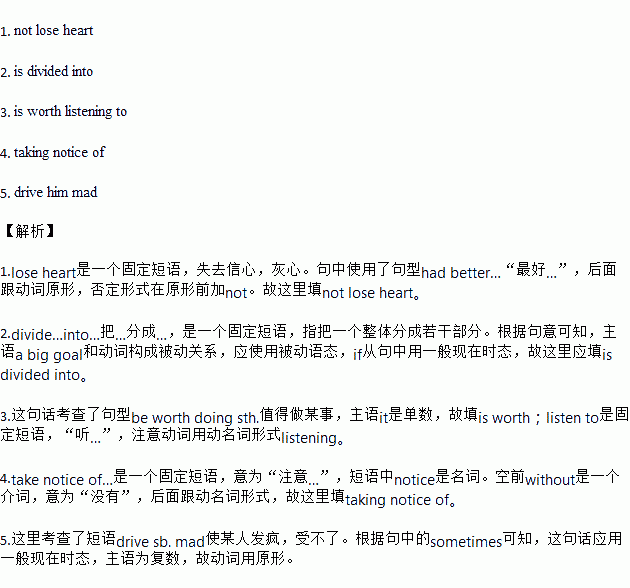题目内容
根据所给汉语完成下列句子,每空词数不限。
1.无论你的境况有多难,你都不要灰心丧气。
No matter how hard your situation is, you had better _______________________.
2.如果你的大目标被分解成很多小步骤,它将更容易被实现。
If your big goal _______________________ many little steps, it will be achieved more easily.
3.这首歌非常好听,它值得反复听。
The song is so nice that it _______________________ again and again.
4.他从我身边走过, 一点都没注意到我。
He walked past me without_______________________ me.
5.来自父母的抱怨有时候使他受不了。
The complaints from his parents sometimes_______________________.
 53随堂测系列答案
53随堂测系列答案根据文章内容完成表格,每空一词。
Hello! I'm Barbara Green. I'm a girl. Look! I'm from America. I live at 225 King Street, Washington.(华盛顿) My telephone number is 474-8980. My e-mail address (电子邮箱地址) is barbaragreen@sina.com. Do you like to give a call or send an e-mail to me? I'd like to be your friend.
根据短文内容,完成下面表格。
Full name | Babara 1. |
Address | 225 King 2., Washington.(华盛顿) |
3. number | 474-8980 |
Country | 4. |
5. address | barbaragreen@sina.com. |





